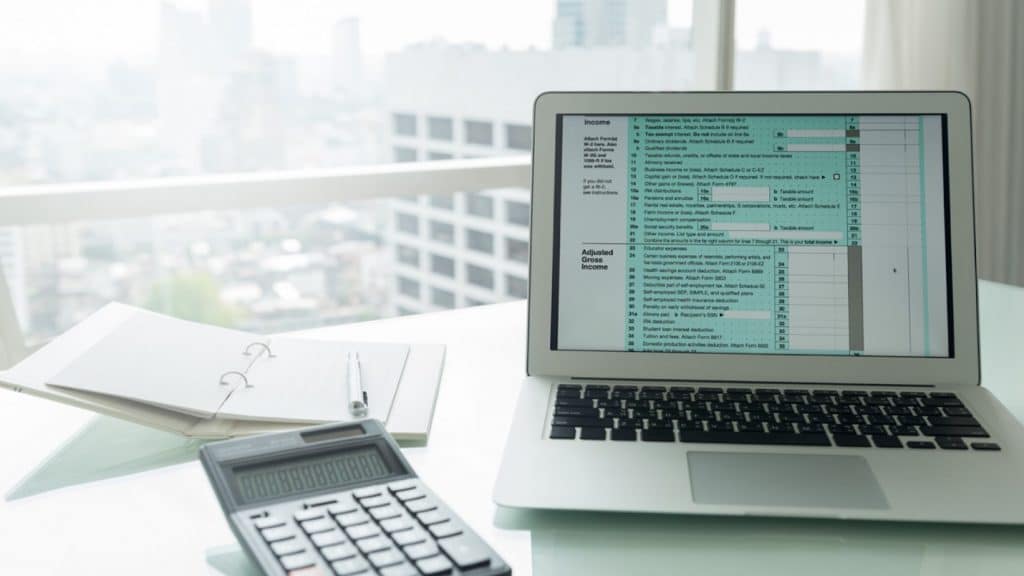Grasping the concept of sales tax nexus is crucial for Amazon sellers. As an entrepreneur striving for success, it is paramount to understand how taxation works.
Failing to grasp what a sales tax nexus is could lead to legal headaches and financial setbacks that can significantly impact your business health.
Luckily, Amazon provides sellers with the proper tax guidelines and requirements for sellers. Thus, the retail giant hopes to ensure that all brands comply with tax laws in various jurisdictions.
It’s crucial that you familiarize yourself with these policies. In doing so, you’ll be able to meet your legal obligations, prevent penalties, and keep a healthy seller rank on Amazon.
What is a Sales Tax Nexus?
A “Nexus” refers to the essential connection between a taxpayer and a state, granting the latter party the ability to charge and collect taxes.
Before 2018, sales tax nexus required having a physical presence in a specific state. However, the Supreme Court’s 2018 Wayfair ruling introduced the economic nexus standard.
An economic nexus deems when sellers must collect sales taxes. This may happen when merchants reach a sales or transaction threshold. For example, 200 transactions or $100,000 in sales over a year.
Thus, an economic nexus established a brand’s connection with a state, and its obligation to collect sales taxes.
So, how does this relate to Amazon sales tax collection? Knowing your sales tax nexus can help you know if you’re obligated to collect and remit sales tax in specific territories.
Understanding the Different Types of Nexus
Let’s dive into the different types of nexus and figure out how to navigate this sales tax maze.
- Physical Nexus. This type of nexus is established when you have a physical presence in a state. It could be a physical store, office, warehouse, or even employees or contractors working for you in that state.
- Economic Nexus. As discussed above, it applies for sellers who surpass a set amount of sales volume or transactions in a specific state. There’s a different sales tax nexus by state, and each territory sets its own threshold. If you exceed that plateau, then you’ll need to collect and remit sales tax.
- Affiliate Nexus. This applies when sellers have affiliates or marketing partners that promote your products and generate sales in a specific state. Affiliate nexus standards differ from state to state. For example, some may have specific regulations regarding affiliate marketing.
- Click-Through Nexus. Applies to online retailers that have agreements with in-state affiliates who earn link referrals. If your business has such agreements in certain states, you may have a sales tax nexus.
Why Sales Tax Nexus Matter
Sales tax nexus determines whether a business has a substantial connection to a state. With such a link, the state has the authority to impose sales tax obligations on the seller.
Failing to comply with these obligations can lead to hefty penalties, fines, and potential legal battles.
Note that it’s not required to have physical presence in a given territory. The economic activity generated by Amazon sales can trigger tax responsibilities for off-state sellers.
So, taking care of the sales tax nexus is the smart move for online sellers. This can help you secure a strong reputation with taxing authorities. Plus, you’ll secure your long-term success and sustainability in your top-selling states.
How to Find Your Amazon Sales Tax Nexus
Amazon sellers should pay attention to a few key elements to keep track of their sales tax nexus.
First, assess if you have any physical presence in a state. For example, offices, warehouses, or employees. This generally creates a sales tax nexus, so it should be your starting point.
If you don’t hold a physical presence, it is time to get into a detailed research to understand what other economic factors can lead to creating a nexus in your state. For instance, exceeding sales thresholds or participating in affiliate programs.
Sales tax nexus rules are specific to each state, so take the time to review them. That’s how you can determine if you meet the economic nexus criteria. You can find valuable guidance on state revenue department websites or by seeking professional advice.
Amazon provides helpful tools like the seller sales tax report. This feature automates tax calculation, collection, and remittance on your behalf. Here’s how you can access it:
- Head over to Seller Central.
- Go to the Reports section.
- Look for the Fulfillment category.
- Check out the Inventory Event Detail section to see where Amazon keeps your inventory.
If you want to know the states where you have sales tax nexus, pick the date when you first started selling on Amazon.
The report has loads of information, so it’s better to download it instead of squinting at the screen. Just hit the download tab and choose a time-frame you’re interested in. After a few minutes, the report will be ready.
Once you open it, notice the “fulfillment-center-id” column. It’ll show you details about the Fulfillment Centers where Amazon stores your inventory. These are the places where you have nexus and need to collect sales tax.
By using Amazon’s Fulfillment reports, you can easily find out the specific sites where you have sales tax nexus. Thus, you’ll turn tax compliance into a simpler task.
5 Steps to Deal with your sales tax nexus
Now that we have discussed the importance of the sales tax nexus, it’s clear that this is something you should keep in mind.
If you have never dealt with the concept before, you are probably thinking about where to start. Here are some practical steps that can help turn this process into an easy road:
Identify Your Nexus
Conduct a sales tax nexus research in states where you have a significant presence or meet the economic thresholds.
Seek guidance from tax professionals or utilize online resources to determine if you qualify for nexus, and to understand the specific requirements of each state.
Register for Sales Tax Permits
Once you have identified the states where you have nexus, proceed to register for sales tax permits or licenses in those jurisdictions.
The process involves providing detailed information about your business. For example, your federal tax ID number and the locations where you have nexus.
Remember to follow state procedures thoroughly to ensure compliance.
Collect Sales Tax
Once you have obtained the necessary permits, start collecting sales taxes. To do so, it’s essential to understand the correct sales tax rates for each jurisdiction, and apply them to your transactions.
Configure your e-commerce platform or point-of-sale system to collect the appropriate sales tax amount automatically.
File and Remit Sales Tax
Regularly file your sales tax returns according to the prescribed schedule by the state.
Always keep detailed records of your collected taxes and sales for each jurisdiction to simplify the filing process.
Adhere to the filing deadlines and remit the collected sales tax within the specified timeframe to meet your obligations.
Use Automation Tools
Managing sales tax compliance manually can be time-consuming and prone to errors. Consider utilizing automated sales tax software to make things easier. These tools can help you accurately calculate sales tax, generate reports, and even automate the filing of returns.
By leveraging automation, you can streamline your sales tax compliance efforts, reduce the risk of errors, and save valuable time.
If the process gets too overwhelming for you to manage, it is always a good idea to hire a professional that can help you set up some systems.
Final Thoughts
Being aware of Amazon’s tax policies is of utmost importance for sellers. Here’s why:
- Ensure legal compliance and financial health.
- Avoid penalties, fines and litigation.
- Contribute to funding for public services.
Taking a proactive approach to managing your sales tax obligations. In doing so, you’ll streamline operations, and minimize risks. Plus, you’ll be able to focus on what matters most: long-term success.
Author





